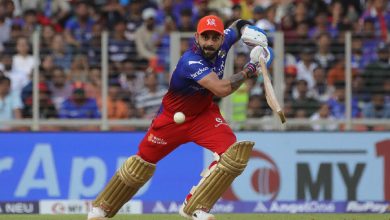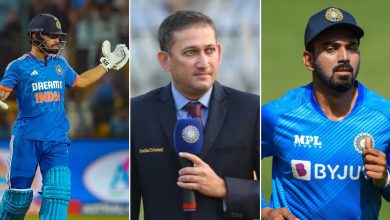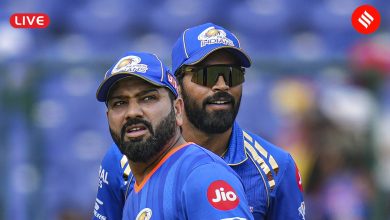India’s T20 story: Batsmen who can’t bowl and bowlers who can’t bat | Cricket News

How many players are there in a cricket team? The literal answer is unquestionably 11. But some teams create an impression that they have more than just eleven, and some others fewer than 11. At St George’s Park, South Africa seemed to have more than eleven and India fewer than eleven. India had the classical Test team—six batsmen including the wicket-keeper, an all-rounder, and four special bowlers. None of the six batsmen could bowl, and none of the four bowlers could bat. Like polite neighbors, they seemed averse to usurping into each other’s well-defined spaces. In striking contrast, South Africa had nine who can bat and six who could bowl, in lieu with the spirit of the T20 age.
But you could argue that different teams adopt different approaches. Besides, a team combination is subject to the availability and quality of those available. But it matters in big matches and against big opponents. In the end, superior depth in batting and bowling was the difference between India losing and South Africa winning the second T20. When Reeza Hendricks and Co. pillaged India’s bowlers, Suryakumar Yadav could only keep recycling the same bowlers in the hope that someone would produce a piece of magic. None did, and he was made to rue the unavailability of a part-time, partnership-breaking sixth bowler. All teams have one, or more than one. South Africa has Aiden Markram; Australia Travis Head and Mitchell Marsh; New Zealand Rachin Ravindra, Glenn Phillips and Daryll Mitchell; Pakan have Iftikhar Ahmed and Imad Wasim; England Liam Livingstone and Harry Brook.
Where the world has gone behind multitaskers, India have stuck with specials. Perhaps, there are not adequate alternatives, perhaps that is their philosophy, but it is taking India backwards in the most dynamically-evolving format.
More damning is the ineptness of India’s lower-order, from No 8 and beneath. None of them, from No 8 to 11, are boundary-hitters. Some of them Kuldeep Yadav could stick around in longer versions, but stickability is a curse in the shortest format. The combined haul of boundaries the last four batsmen have hit in the T20 careers (not just T20Is) is 34 fours and four sixes in 113 innings.
As physicians would tell you if the legs are wobbling, the whole body would lose its balance. The fragility of the lower-order shackled the middle order too. A case study: When Jitesh Sharma departed, India were 142 for 4 in 15.2 overs. In the next 20 balls, before Rinku smeared Aiden Markram for successive sixes off the last two balls of the 19th over, an irrational conservatism had clutched Rinku and Jadeja, as they eked out only 24 runs in this period. Part of the crawl, modern-day T20 yardsticks, owed to Jadeja’s travails in finding boundaries of spinners. From 2022, he has managed just a strike rate of 87 against them, hitting them for just two sixes and four fours in the 88 balls he has faced. On Tuesday, he squeezed out only nine runs off eights. Rinku too shunned his aggression. The period cost India, as it had them in the past.
Even the West Indies exposed this weakness of India in their previous series. In the first T20. At one stage, India were strolling and required only 37 runs from five overs with six wickets in tact. But Hardik Pandya and Sanju Samson departed in the space of three balls. Still, the target was achievable, but India contrived to lose four runs. In the next game, West Indies showed how to do it, as their No 9 and No 10, ‘ Akeal Hosein and Alzarri Joseph, stitched a calm partnership of 26 runs off 17 balls for the ninth wicket to guide them home. Captain Hardik Pandya would admit after the game: “We need to figure out how we strengthen our No. 8, 9 and 10 as well if we need them to chip in with five-ten runs.”
Even the West Indies exposed this weakness of India in their previous series earlier this year. ( AP | PTI)
Before the ODI world cup, Rohit Sharma too would point out the West Indies game and a game that Pakan won against Afghanan with help of bowlers who could bat as the area of weakness for India. “Never mind the No.4 spot, our worry is from No. 8 on,” Rohit would tell this newspaper.
Nearly six months on, India are in South Africa where they were in the West Indies. At the same spot of concern, without a solution in plain-sight or hiding. Just the names have changed, not their profiles. Kuldeep Yadav and Ravi Bishnoi keep shuttling in and out of the No 8 slot. Neither could strike big. Nor could Arshdeep Singh, Mohammed Siraj or Mukesh Kumar. The scene would not change dramatically even if you replace them with Mohammed Shami or Jasprit Bumrah. Both of India’s cross-format lead bowlers are useful in longer versions, but not so much in T20s. Bumrah strikes at 85 per hundred balls; Shami a marginally better 90. Both average below 10. Among the fringe seamers too—the likes of Avesh Khan and Prasidh Krishna—none bring considerable batting utility.
In this era of ceaseless dynamics and paradigm shifts, an endless treadmill of changes in role, batsmen who can’t hit boundaries down the order are an inexorable burden to the team. Other teams have seized the spirit of the age. Australia were bestowed with Pat Cummins and Mitchell Starc at No 8 and 9. The No 10 often is Adam Zampa. Even when all the regulars were resting, they possessed the luxury of Ben Dwarshuis, with a strike rate of 128 and average of 15, at No 8. Both of Pakan’s seam-wunderkinds, Naseem Shan and Shaheen Afridi could flex their shoulders. As could New Zealand’s Kyle Jamieson and Tim Southee. England’s latest order had Chris Woakes at 8, and Rehan Ahmed at 9 (he hits a boundary every seventh ball in this format). West Indies’s latest iteration had Andre Russell at 8, and Jason Holder at 9.
It’s not every day that they would be dialled for runs. None of them would be expected to strike the fastest 50 ever in the game, but just quick-fire 15-20 runs would matter a lot. But there is the subconscious assurance that there is muscle down the order. It is this thought that shackled Rinku and Jadeja towards the end of India’s innings. And hence, before the T20 World Cup descends, India would have to devise means to make the team look more than just a group of eleven.







